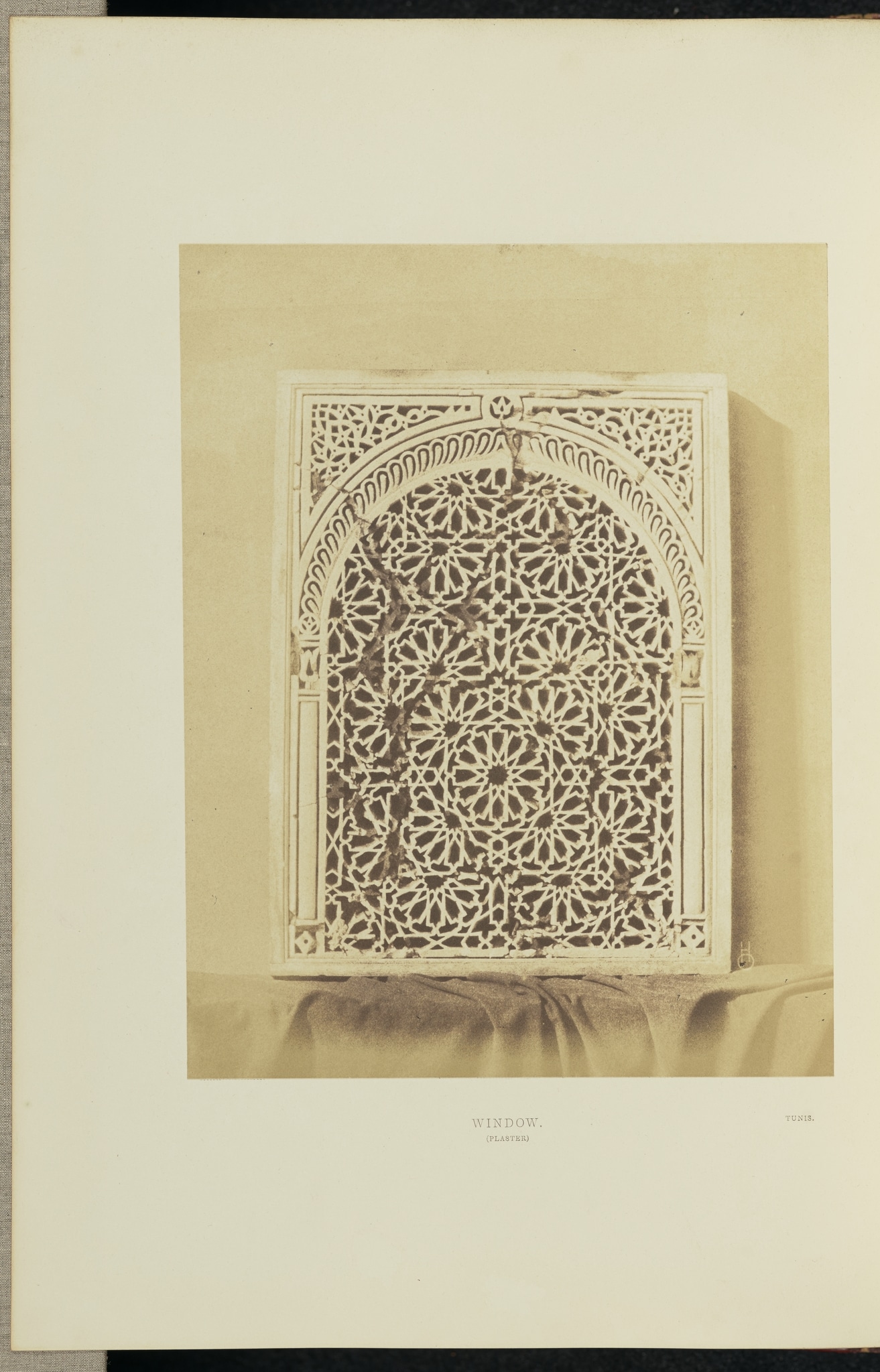This black and white photograph with sepia toning shows a plaster window removed from its architectural context but positioned as an object on a cloth-covered table in front of a wall. Reproduced in the publication Exhibition of the Works of Industry of all Nations, 1851. Reports by the Juries on the Subjects in the Thirty Classes into which the Exhibition was Divided, we can conclude that the object documented was exhibited at the first world’s fair in London. However, it is not certain whether the window was displayed as it appears in the photograph, or whether the setting was deliberately created for taking the photograph. The caption in the publication specifies the provenance of this window as being Tunis.
The window has a rectangular frame, but the internal structure is defined by a round arch resting on two columns. The spandrels show an intertwined tendril ornament, while the main inner surface consists of a plaster lattice in the form of numerous intersecting twelve-pointed stars. The photograph does not enable us to see whether the openings were backed with small pieces of coloured glass, as was the case with many windows of the same typology (IG_270–IG_274, IG_362–368).
As it bears several traces of damage, the window gives the impression of being a historical spolia rather than a new creation by contemporary craftsmen. The arches, one column, and the spandrels show cracks. Moreover, some parts of the plaster lattice are broken off, and in these places a deeper level of the plaster lattice can be seen. It is also possible that the damage occurred during transportation to London, especially as there are known examples of stucco and glass windows being damaged when exported to Europe (cf. IG_86). In any case, the window exhibited at the 1851 world’s fair gave the impression of an old, used architectural fragment.
Neither the text of the Exhibition of the Works of Industry of all Nations, 1851 nor the Official Descriptive and Illustrative Catalogue mentions a Tunisian window (cf. Hamber 2018, p. 335). The window is perhaps one of the ‘13.–2 models of arabesque plaster ornaments, used for decorating the interior of Moorish rooms, beautifully carved’ listed in the Official Descriptive and Illustrative Catalogue (Royal Comission, 1851, p. 1413).
The Tunisian window found an audience not only among the visitors to the Great Exhibition. As well as being published in the catalogue, the image was displayed at the exhibition at the Society of Arts in London from December 1852 to January 1853; from September 1853 to April 1854, and again from April to November 1854, it was part of the 1st and 2nd Tour of circulating photographs organized by the Society of Arts (see Hamber, 2018, p. 335).
